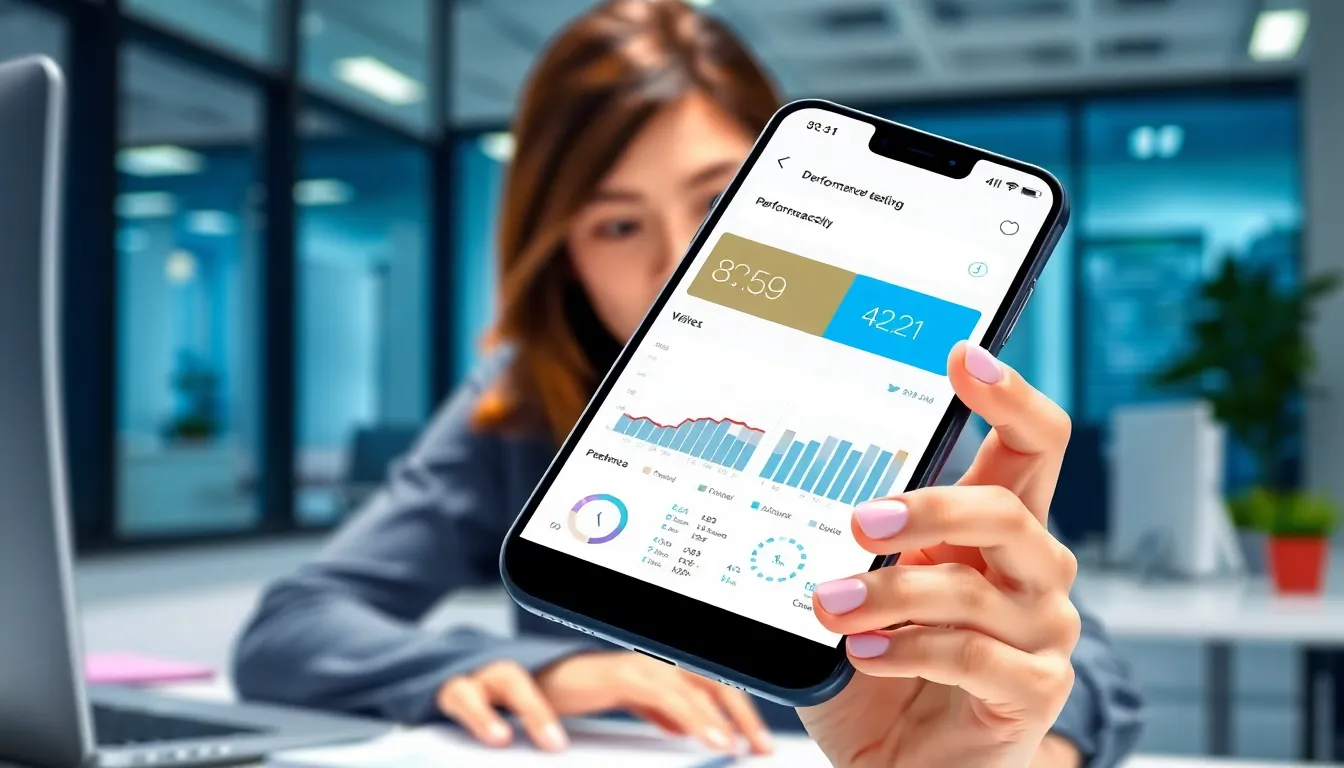In today’s fast-paced world, mobile apps are the lifeblood of convenience and entertainment. But what happens when those apps start to lag like a tortoise in a marathon? Performance testing mobile apps isn’t just a techie buzzword; it’s the secret sauce that keeps users happy and engaged. Imagine your favorite app crashing during a crucial moment—like when you’re trying to find the nearest pizza joint during a midnight craving. Not cool, right?
Performance Testing Mobile Apps
Performance testing evaluates how well mobile apps respond under various conditions. It focuses on important factors such as speed, scalability, and stability. High-performance demands exist due to the widespread reliance on mobile applications for daily tasks.
User experiences vary significantly based on app responsiveness. Lagging or crashing apps result in user frustration, especially during critical moments like searching for food late at night. Effective performance testing identifies flaws before launch, ensuring reliability during peak usage times.
Different types of tests help assess performance. Load testing measures how an app behaves under expected user loads. Stress testing evaluates performance under extreme conditions, such as sudden spikes in user traffic. Endurance testing checks long-term performance to ensure consistent quality over time.
Tools play a critical role in performance testing. Popular tools include Apache JMeter, LoadRunner, and Appium, which automate testing processes and deliver accurate results. Using these tools streamlines test execution and reporting, improving efficiency.
Results from performance tests enable developers to pinpoint weak areas early in the development cycle. Addressing issues immediately leads to polished apps that withstand user demands. Prioritizing performance testing enhances app quality, leading to higher user satisfaction and retention rates.
Importance Of Performance Testing

Performance testing is crucial for mobile apps, ensuring they meet user expectations in speed and reliability. This process addresses potential issues before they lead to user frustration.
Enhancing User Experience
User experience improves significantly with effective performance testing. Lagging apps can drive users away, while fast, responsive applications keep them engaged. App responsiveness impacts overall satisfaction, directly affecting retention rates. By accurately measuring response times under various conditions, developers identify bottlenecks. Addressing these issues enhances functionality and boosts user loyalty. High performance translates to positive reviews and increased downloads. When mobile apps perform well, users enjoy a seamless experience that encourages frequent use.
Reducing Application Failure Rates
Application failure rates decline with regular performance testing. By simulating high user loads, developers detect potential crashes ahead of time. Identifying weak areas during testing allows for timely fixes. Effective performance testing uncovers issues like memory leaks or resource limitations before they escalate. This proactive approach minimizes negative user experiences, which can harm app reputation. When apps function reliably during peak usage, user trust increases. Consistent performance fosters satisfaction and significantly lowers churn rates. Prioritizing performance testing directly impacts the success and longevity of mobile applications.
Types Of Performance Testing
Performance testing encompasses various types, each targeting different aspects of mobile app functionality. These types include load testing, stress testing, and endurance testing, which play crucial roles in optimizing app performance.
Load Testing
Load testing assesses the app’s performance under expected user loads. It determines how well the app handles a specific number of simultaneous users, focusing on response times and overall system behavior. By simulating real-world usage scenarios, developers identify bottlenecks and performance limits. The test results guide adjustments, ensuring the app remains responsive during peak usage. Tools like Apache JMeter and LoadRunner streamline this process, providing detailed reports that help teams pinpoint performance issues efficiently.
Stress Testing
Stress testing evaluates how the app performs under extreme conditions, pushing it beyond normal operational capacity. This method reveals the app’s breaking point, highlighting areas of failure and reliability concerns. Developers apply this testing to understand how the app behaves when subjected to excessive load or limited resources. Uncovering weaknesses early can prevent catastrophic failures during actual user spikes. Analyzing stress test outcomes allows teams to implement fixes and enhance the app’s stability in challenging scenarios.
Endurance Testing
Endurance testing, also known as soak testing, examines the app’s performance over extended periods. It simulates long-term usage, checking for issues like memory leaks that could arise during prolonged operation. By ensuring consistent performance over time, developers can detect subtle flaws that surface only with continuous use. Achieving smooth functionality throughout extended sessions builds user trust and satisfaction. This testing method successfully preserves app quality and performance, contributing to a robust user experience.
Tools For Performance Testing Mobile Apps
A variety of tools exist for performance testing mobile applications, each offering unique features to enhance testing efficiency. These tools streamline the evaluation process, ensuring developers identify performance issues effectively.
Popular Testing Tools
Apache JMeter stands out as a widely used tool for load and stress testing. LoadRunner excels in simulating real-world user interactions to assess app performance. Appium provides a versatile platform for automated testing across different mobile devices. Other noteworthy tools include Gatling and Blazemeter, which offer in-depth performance metrics and user-friendly interfaces.
Selecting The Right Tool
Choosing the right tool requires considering specific app needs and project goals. Factors to evaluate include testing scope, team expertise, and budget allowances. Prioritizing tools that provide comprehensive reporting aids developers in identifying performance bottlenecks. Understanding the target audience’s behavior can also influence the selection process. Tools that integrate easily with existing development environments facilitate smoother testing workflows. Evaluate options thoroughly to ensure alignment with overall performance objectives.
Best Practices For Performance Testing
Effective performance testing requires careful planning and execution to yield valuable insights. Identifying objectives upfront guides the testing efforts, focusing on what matters most for the app’s performance under various conditions.
Test Planning
Planning involves defining the testing scope, identifying performance metrics, and selecting appropriate testing methodologies. Establishing baseline performance metrics determines what success looks like for the app. It’s essential to forecast user scenarios, including peak usage times, to tailor the tests effectively. Allocating resources, including personnel and tools, ensures comprehensive coverage throughout the testing phases. Tracking progress against set goals reveals any discrepancies, allowing timely adjustments.
Monitoring And Reporting
Monitoring performance data during tests provides actionable insights into the app’s behavior. Utilizing real-time monitoring tools enables teams to spot bottlenecks as they occur, ensuring quick responses to issues. Comprehensive reporting afterward highlights critical findings, aiding future optimization efforts. Sharing these results with stakeholders fosters transparency and collaboration, enhancing overall testing cycles. Regularly reviewing and refining reporting metrics aligns with ongoing testing objectives, making the process more efficient and effective over time.
Conclusion
Prioritizing performance testing is essential for the success of mobile apps. It not only enhances user experience but also builds trust and satisfaction among users. By identifying performance issues early in the development cycle developers can ensure their apps remain stable and responsive under various conditions.
Utilizing the right tools and following best practices leads to efficient testing workflows and valuable insights. This proactive approach minimizes the risk of application failures and fosters a loyal user base. Ultimately high-performing apps contribute to positive reviews and increased downloads making performance testing a crucial aspect of mobile app development.



